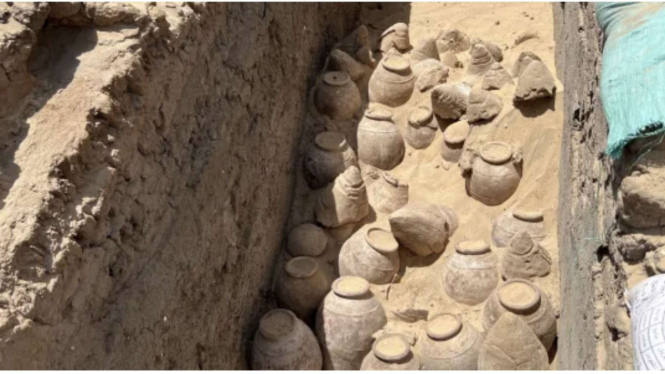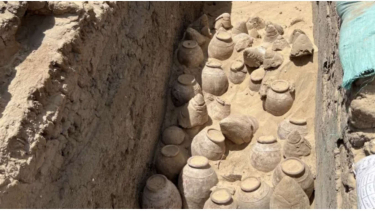5,000-Year-Old Wine Discovered in Egyptian Queen's Tomb
- India Times/Wikimedia Commons
Egypt – A very surprising archaeological discovery was made when researchers accidentally found grapes that had been cultivated for almost 5,000 years in Egypt.
This discovery happened during an excavation of Egypt's first female pharaoh, Queen Meret-Neith's tomb in Abydos, a team led by archaeologist Christiana Kohler from the University of Vienna.
As information, Queen Meret-Neith was known as an influential woman of her time, and it's even possible that she was the first female pharaoh in Egypt.
Piramida Mesir.
- Pixabay
When archaeologists explored Queen Meret-Neith's tomb, they found various valuables, including a vessel containing wine. The wine is believed to have been placed in her tomb around 5,000 years ago, as reported by India Times.
According to Professor Christiana Kohler, the wine in the vessel was no longer liquid, making it difficult to determine whether it was red or white wine.
However, this discovery is very important as it is one of the oldest evidence of wine production. Similar discoveries have also been reported in other tombs in Abydos, indicating that the practice of winemaking dates back to ancient Egypt.
In addition to finding grapes, the researchers also found many other organic traces, such as grape seeds and crystals, which may be tartar.
All of these findings are in the process of being scientifically analyzed to uncover more information about winemaking and ancient burial practices in Egypt.
Piramida Merah, piramida terbesar ketiga di Mesir
- http://terbarudidunia.blogspot.com
In addition to revealing the secrets of ancient winemaking, this discovery also breaks previous theories about human sacrifice in royal funeral rituals during Egypt's First Dynasty.
Previously, many thought that human sacrifice was part of royal funeral rituals, but this discovery suggests that these funeral practices may have occurred in multiple stages over several generations.
This discovery provides valuable insight into the history of wine production and ancient funeral practices in Egypt. Although the wine is no longer drinkable, it remains one of the most interesting and important archaeological discoveries for understanding ancient history.























